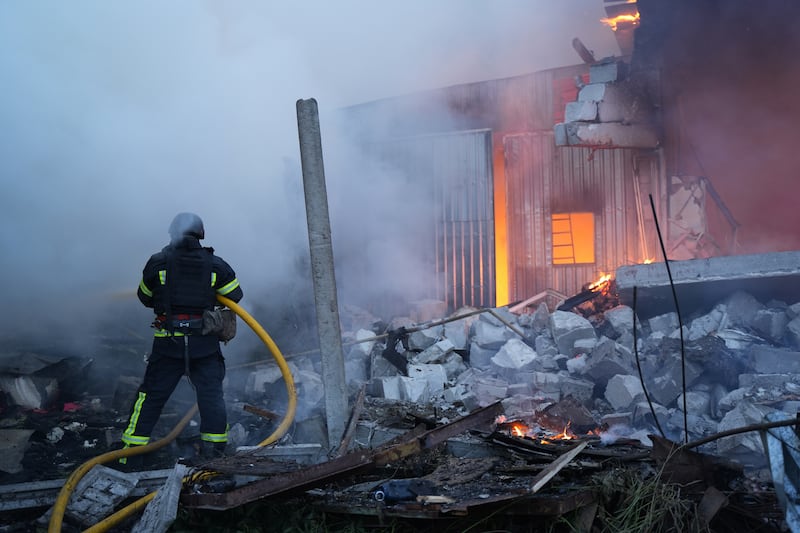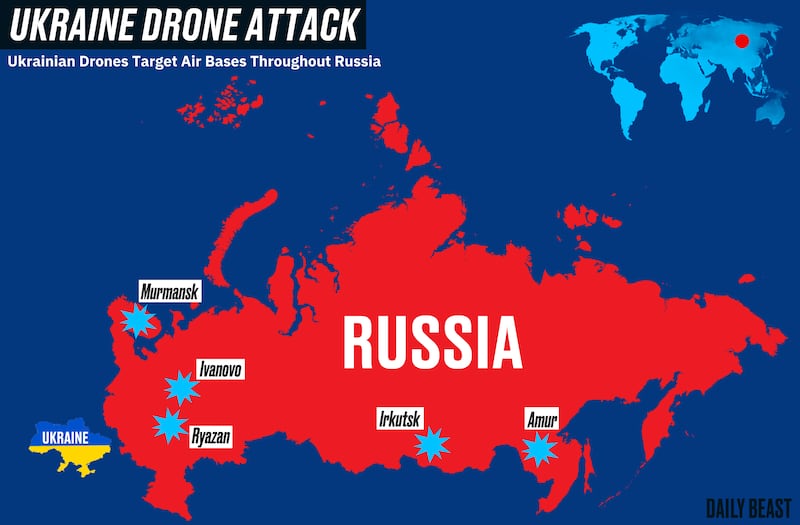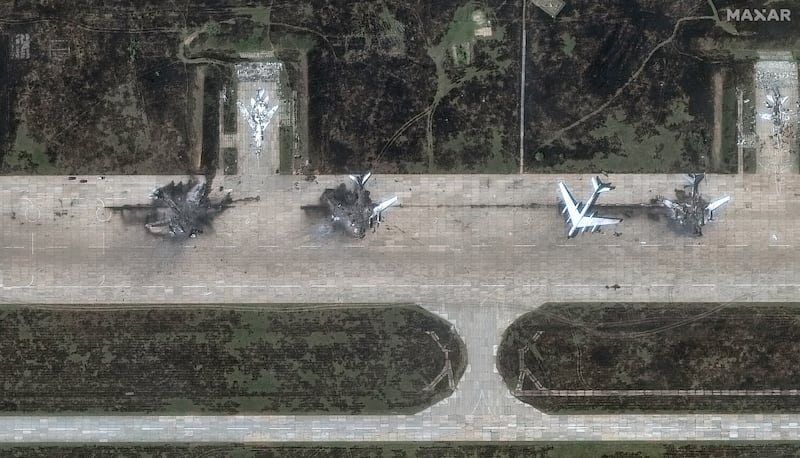Ever since Ukraine’s devastating drone attack on Russian strategic bombers, the Kremlin has been trying to figure out a fitting response.
Ukraine initially claimed 41 Russian aircraft were hit in the sneak June 1 attack on deep-lying airbases, though subsequent satellite imagery suggests fewer airframes may have been damaged or destroyed than initially thought.
Nevertheless, the blow is significant enough to Russia’s bomber fleet that President Vladimir Putin has to respond to save face. But while Russia has stepped up nightly drone and missile attacks at Ukrainian cities—framed as “revenge”—Putin has not been able to ease the sting of Russia’s lost aircraft.

“Operation Spider’s Web,” as the secret Ukrainian operation was dubbed, was a big enough deal to feature in a lengthy call between Putin and President Donald Trump, who blithely claimed that Putin “will have to respond” to the attacks.
Trump himself reportedly thought the Ukrainian operation—using drones assembled in Russia itself and hidden in trucks—was “bad-ss,” then later suggested Ukraine’s precision strike on military aircraft justified subsequent Russian attacks on Ukrainian civilians. Trump’s view is firmly rooted in the idea that both sides are at fault, like a messy schoolyard brawl, even though Russia clearly started the conflict with its invasion of Ukraine.
Trump’s comments aside, Russia’s major problem is one of optics: Ukraine’s attack was focused solely on Russian military targets; Russia’s attacks, both before and after Spider’s Web, are more often than not aimed at civilian targets like apartment buildings. The difference in approach reflects a major feature of the war: that Ukraine is fighting off the Russian military, while Russia is fighting against the Ukrainian people.

Responding to a military disaster by causing a humanitarian disaster will do little to convince observers other than Trump that Russia’s strikes are in any way justifiable.
At previous points in the war when Russia has suffered a military setback—the loss of its Black Sea Fleet flagship, for example, or a bombing attack on the Kerch Bridge—Putin’s response has been predictable: a large-scale retaliatory strike on Ukrainian cities to draw the headlines away from their embarrassment.
Part of the problem this time is that Russia was already in the middle of an escalation, launching ever more brutal drone and missile attacks on apartment blocks and other civilian targets in Ukraine in an apparent bid to soften the Ukrainians up for Trump’s “peace talks.”
Putin’s post-Spider’s Web drone attacks against Ukraine’s cities were indeed huge, with more than 800 kamikaze drones sent over the border in the following days.
The attack on Sunday June 8 was the largest to date, using 479 Shahed-style drones. That broke a record that had been broken four times already in the past few weeks, most recently on the same day as the Spider’s Web attack on Russian airbases.
An additional complication for Russia is that many of the planes that would launch missiles at Ukrainian civilians were themselves damaged in the Ukrainian attack. They have other bombers that could do the role, but these are in various states of modernization or are more expensive to operate.
Russia’s recent use of Iskander missiles, which are launched from the ground instead of by air, strengthen the impression that Russia’s bomber fleet is at least temporarily unable to launch the dozens of missiles it could in the past.
Putin is taking his military insecurity out on Ukrainian civilians and is threatening the nascent peace process. Russia and Ukraine have had tense negotiations in Istanbul, which are widely considered a step forward even if they have not yet achieved results beyond prisoner swaps.
Ukraine had repeatedly suggested a 30-day ceasefire, which Russian officials have so far rejected. Putin told reporters last week that Kyiv “does not need peace” and that Ukraine is relying on terrorism, even though the attacks struck military targets at a time of war.

For now, the initiative in the drone war is with Ukraine. In addition to Spider’s Web, Ukraine’s long-range drones have continued to hammer Russian military infrastructure. Last Friday Ukrainian drones struck an oil depot that supplies one of Russia’s major airbases. Ukrainian officials have also promised more covert operations like Spider’s Web, forcing Russian authorities to slow down commercial shipping across the country to conduct mass searches for stowaway drones.
Russia may not be moving fast enough to stop more attacks. On Saturday, drones hidden aboard a Russian military reportedly destroyed dozens of armored vehicles and tanks.
While commentators discuss just how much Ukraine’s sneak attack may have changed war in general--a few thousand dollars worth of drones destroying an estimated $7 billion of hardware--the question remains as to how it will change this war.
If Ukraine can pull off more audacious strikes against the Russian air force, then it will pose a serious challenge to Putin’s war effort and Russia’s ability to threaten NATO. If Ukraine opts for their more traditional long-range strikes against oil facilities and airfields, then the damage to Russia’s military and finances will be more gradual.
The implications for Russia’s ongoing summer offensive along the front lines are also unclear. Russia’s use of its bombers to strike Ukraine’s cities means that knocking them out might only indirectly benefit Russia’s frontline troops. Even so, Ukraine’s successes, such as shooting down one of Russia’s most advanced fighter jets at the weekend, point to their resilience in the face of Putin’s renewed onslaught.
As Russia grapples with the fallout from Spider’s Web, it will have to face some hard realities. Ukraine’s ability to strike Russia has expanded dramatically since 2022 and shows no sign of slowing down. Even as Putin and others claim that they cannot negotiate a peace with Ukraine, the continuing degradation of Russia’s economy and military capability may yet force the Kremlin boss to the table.








